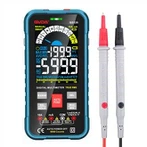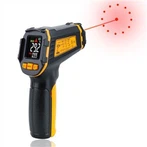Comparison of linear power supply principle and switching power supply
Liner power supply first reduces the voltage amplitude of the alternating current through a transformer, and then rectifies it through a rectifier circuit to obtain a pulsed direct current, and then filters it to obtain a direct current voltage with tiny ripple voltage. In order to achieve high-precision DC voltage, it must be stabilized by a voltage stabilizing circuit.
Comparison of linear power supply and switching power supply
It means that the tube used for voltage adjustment works in the saturation and cut-off area, that is, the switching state.
Generally, the output voltage is sampled and then sent to the comparison voltage amplifier with the reference voltage. The output of the voltage amplifier is used as the input of the voltage adjustment tube to control the adjustment tube so that the junction voltage changes with the input, thereby adjusting its output voltage. But the switching power supply changes the output voltage by changing the on and off time of the regulator tube, that is, the duty cycle!
From its main features: the linear power supply technology is very mature, the production cost is low, it can achieve high stability, the ripple is also small, and there is no interference and noise of switching power supply, but its volume is relatively small compared to switching power supply. It is relatively large and requires a high input voltage range; and the switching power supply is the opposite.
Their functions are:
1. Input grid filter: Eliminate interference from the grid, such as the start of the motor, the switch of electrical appliances, lightning strikes, etc., and also prevent the high-frequency noise generated by the switching power supply from spreading to the grid.
2. Input rectification filter: rectify and filter the input voltage of the grid to provide DC voltage for the converter.
3. Inverter: It is a key part of switching power supply. It transforms the DC voltage into a high-frequency AC voltage and plays a role in isolating the output part from the input grid.
4. Output rectification filter: rectify and filter the high-frequency AC voltage output by the converter to obtain the required DC voltage, and at the same time prevent high-frequency noise from interfering with the load.
5. Control circuit: detect the output DC voltage, compare it with the reference voltage, and amplify it. The pulse width of the oscillator is modulated to control the converter to keep the output voltage stable.
6. Protection circuit: When the switching power supply has an overvoltage or overcurrent short circuit, the protection circuit stops the switching power supply to protect the load and the power supply itself.
The switching power supply first rectifies the alternating current into direct current, then inverts the direct current into alternating current, and then rectifies and outputs the required direct current voltage. In this way, the switching power supply saves the transformer in the lower linear power supply and the voltage feedback circuit. The inverter circuit in the switching power supply is completely digital adjustment, which can also achieve very high adjustment accuracy.
The main working principle of the switching power supply is that the Mos tubes of the upper bridge and the lower bridge are turned on in turn. First, the current flows in through the Mos tube of the upper bridge, and the electric energy is accumulated in the coil by using the storage function of the coil. Finally, the Mos tube of the upper bridge is turned off, and the lower bridge is turned on. The Mos tube, coil and capacitor of the bridge continuously supply power to the outside. Then turn off the lower bridge Mos tube, and then open the upper bridge to let the current enter, and repeat like this, because the Mos tube needs to be switched on and off in turn, so it is called a switching power supply.
The linear power supply is different. Since there is no switch involved, the upper water pipe is always discharging water. If there is too much water, it will leak out. This is what we often see in some linear power supplies. The Mos tube generates a lot of heat. The endless electrical energy is all converted into heat energy. From this point of view, the conversion efficiency of the linear power supply is very low, and when the heat is high, the life of the components is bound to decrease, affecting the final use effect.
The difference between a switching power supply and a linear power supply is mainly the way they work.
The power device of the linear power supply works in a linear state, that is to say, the power device is always working as soon as it is used, so it leads to its low working efficiency, generally between 50[[%]]~60[[%]], and It must be said that he is a very good linear power supply. The working method of the linear power supply makes it necessary to have a voltage device to change from high voltage to low voltage. Generally, it is a transformer, and there are others like KX power supply, which then rectifies and outputs DC voltage. As a result, his volume is large, heavy, low in efficiency, and generates a lot of heat. He also has his advantages: small ripple, good adjustment rate, and small external interference. Suitable for use with analog circuits, various amplifiers, etc.
switch power supply. Its power devices work in the switching state, (one on and one off, one on and one off, the frequency is very fast, the frequency of general panel switching power supply is 100~200KHz, and the frequency of module power supply is 300~500KHz). In this way, its loss is small and its efficiency is high. There are also requirements for transformers, which must be made of materials with high magnetic permeability. A little bit of ink, his transformer is a small word. Efficiency 80% to 90%. It is said that the best VICOR modules in the United States are as high as 99%. The switching power supply has high efficiency and small size, but compared with the linear power supply, its ripple and voltage and current adjustment rate are discounted.






